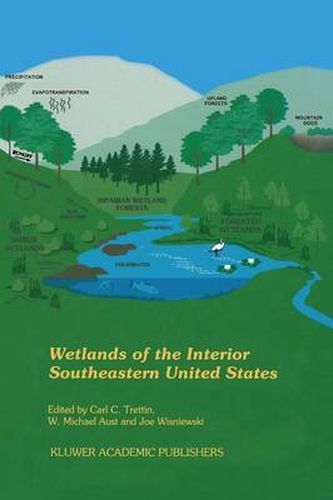Readings Newsletter
Become a Readings Member to make your shopping experience even easier.
Sign in or sign up for free!
You’re not far away from qualifying for FREE standard shipping within Australia
You’ve qualified for FREE standard shipping within Australia
The cart is loading…






This title is printed to order. This book may have been self-published. If so, we cannot guarantee the quality of the content. In the main most books will have gone through the editing process however some may not. We therefore suggest that you be aware of this before ordering this book. If in doubt check either the author or publisher’s details as we are unable to accept any returns unless they are faulty. Please contact us if you have any questions.
The early 1990’s marked an environmental watershed for our countly. Under two federal administrations significant environmental legislative, regulatOly and institutional changes took place which affected our Nation’s wetland resources. Injust a few years, we have seen rapid evolution in the way in which we view wetlands with more emphasis on specific wetland types and the geographic provinces in which they occur. This Southern Appalachian Man and the Biosphere (SAMAB) conference on Wetland Ecology, Management and Conservation represents just one example of our desire to understand wetlands in non-coastal regions of the southern United States. The backdrop to this conference was one where the government, universities, and private sector have come together to create a broader and more sophisticated understanding of environmental stewardship for our water resources, especially wetlands. Although enforcement of environmental legislation by federal and state government agencies - limited by manpower shortages, budgetary constraints and undermined by weak enforcement - remains strong as measured by world standards; the realization that environmental degradation of wetlands is likely to get much worse necessitates a greater commitment and increased resource allocation for wetland protection and management. These contiIUled pressures on the wetland resource will create substantial opportunities for the application of environmentally-sound technologies and interdisciplinmy modeling teams to keep abreast of the factors influencing wetland integrity and function in the last half of the 1990’s.
$9.00 standard shipping within Australia
FREE standard shipping within Australia for orders over $100.00
Express & International shipping calculated at checkout
This title is printed to order. This book may have been self-published. If so, we cannot guarantee the quality of the content. In the main most books will have gone through the editing process however some may not. We therefore suggest that you be aware of this before ordering this book. If in doubt check either the author or publisher’s details as we are unable to accept any returns unless they are faulty. Please contact us if you have any questions.
The early 1990’s marked an environmental watershed for our countly. Under two federal administrations significant environmental legislative, regulatOly and institutional changes took place which affected our Nation’s wetland resources. Injust a few years, we have seen rapid evolution in the way in which we view wetlands with more emphasis on specific wetland types and the geographic provinces in which they occur. This Southern Appalachian Man and the Biosphere (SAMAB) conference on Wetland Ecology, Management and Conservation represents just one example of our desire to understand wetlands in non-coastal regions of the southern United States. The backdrop to this conference was one where the government, universities, and private sector have come together to create a broader and more sophisticated understanding of environmental stewardship for our water resources, especially wetlands. Although enforcement of environmental legislation by federal and state government agencies - limited by manpower shortages, budgetary constraints and undermined by weak enforcement - remains strong as measured by world standards; the realization that environmental degradation of wetlands is likely to get much worse necessitates a greater commitment and increased resource allocation for wetland protection and management. These contiIUled pressures on the wetland resource will create substantial opportunities for the application of environmentally-sound technologies and interdisciplinmy modeling teams to keep abreast of the factors influencing wetland integrity and function in the last half of the 1990’s.